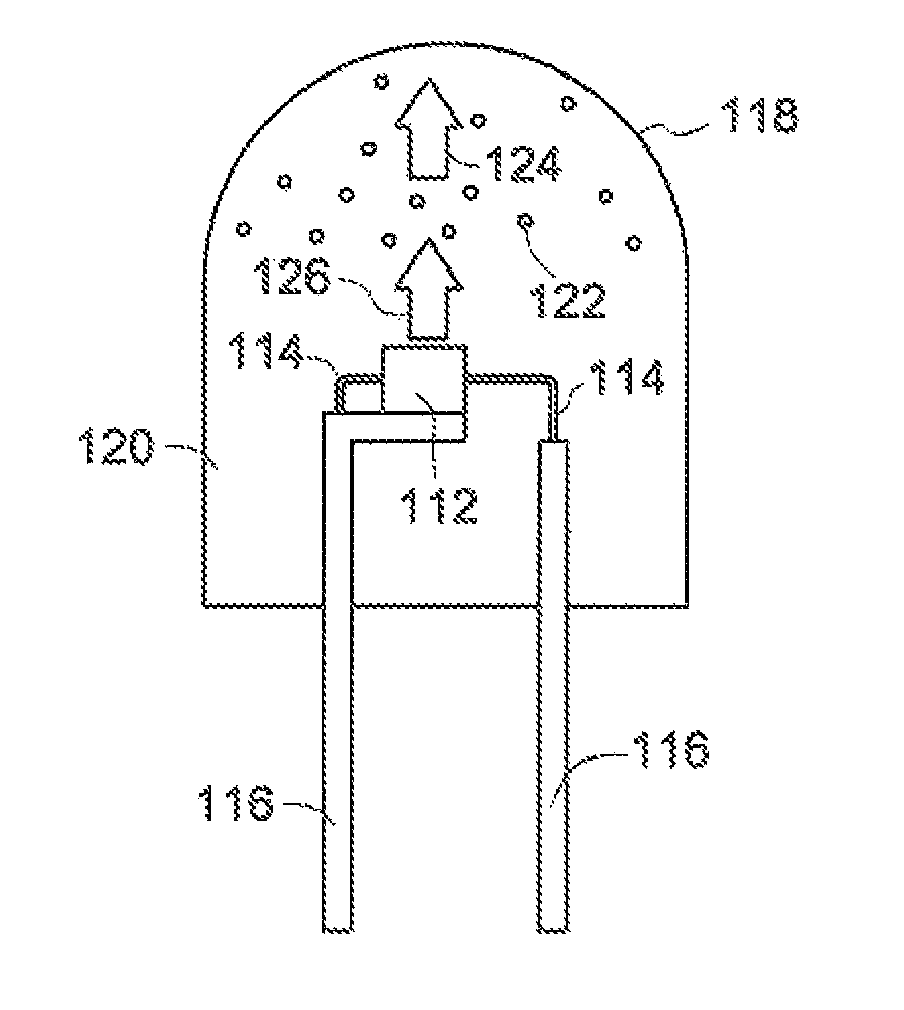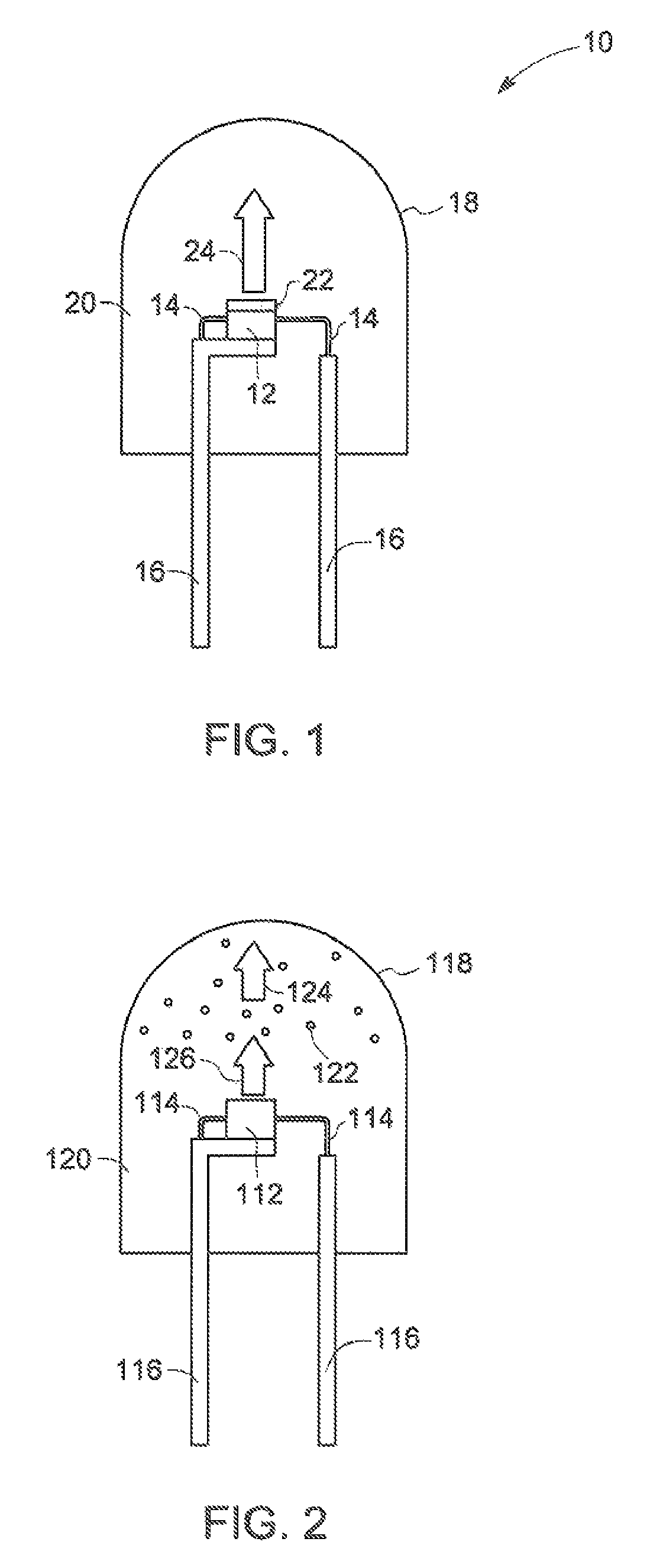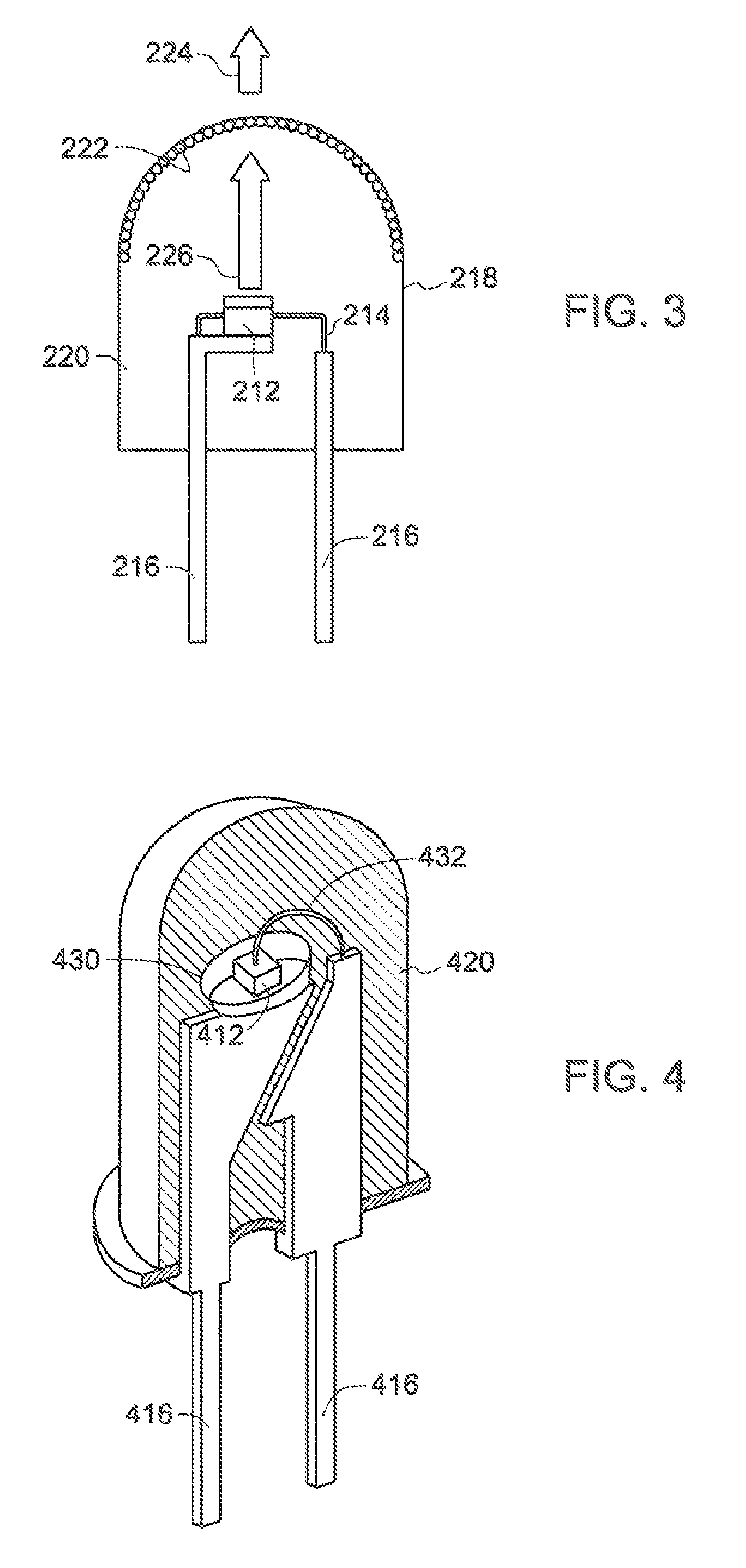Moisture-resistant phosphor and associated method
- Summary
- Abstract
- Description
- Claims
- Application Information
AI Technical Summary
Problems solved by technology
Method used
Image
Examples
example 1
[0052]Preparation of complex fluoride phosphor having K2TiF6:Mn4+ core with K2TiF6 coating (shell).
[0053]Manganese-free K2TiF6 was obtained commercially from Fluka, and manganese-doped K2TiF6 was prepared according to a procedure described in the referenced U.S. Pat. No. 7,497,973, in a 70 percent HF solution with a drying temperature of 70 degrees Celsius.
[0054]3 grams of K2TiF6 was mixed in 5 milliliters of 70 percent HF in a water bath at 70-90 degrees Celsius to prepare a saturated solution. This saturated solution was then poured onto 3 grams of K2TiF6:Mn4+ powder in a beaker, which was placed in a water bath and, in some instances, in an oil bath. The solution was continuously stirred at about 70 degrees Celsius while pouring. A suspension was recovered after stirring for about 15 minutes, which was then evaporated to a thick paste at about 70 degrees Celsius. The thick paste was then poured out on a filter paper to dry. The drying was carried out in a dry box atmosphere at ab...
PUM
| Property | Measurement | Unit |
|---|---|---|
| Temperature | aaaaa | aaaaa |
| Temperature | aaaaa | aaaaa |
| Nanoscale particle size | aaaaa | aaaaa |
Abstract
Description
Claims
Application Information
 Login to View More
Login to View More - R&D
- Intellectual Property
- Life Sciences
- Materials
- Tech Scout
- Unparalleled Data Quality
- Higher Quality Content
- 60% Fewer Hallucinations
Browse by: Latest US Patents, China's latest patents, Technical Efficacy Thesaurus, Application Domain, Technology Topic, Popular Technical Reports.
© 2025 PatSnap. All rights reserved.Legal|Privacy policy|Modern Slavery Act Transparency Statement|Sitemap|About US| Contact US: help@patsnap.com



